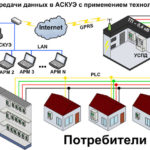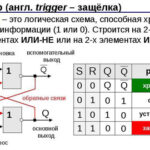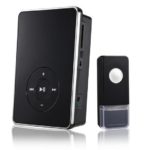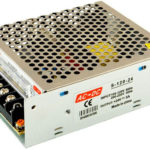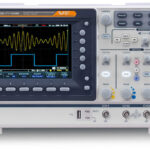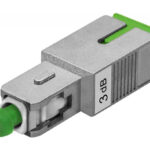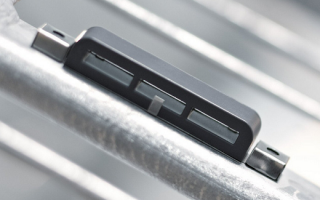Operational remote control of the position and quality of objects is impossible without electronics. The latest developments in this matter are RFID tags. They, having a chip and memory, are capable of transmitting the characteristics necessary for accounting at a distance by radio signals.
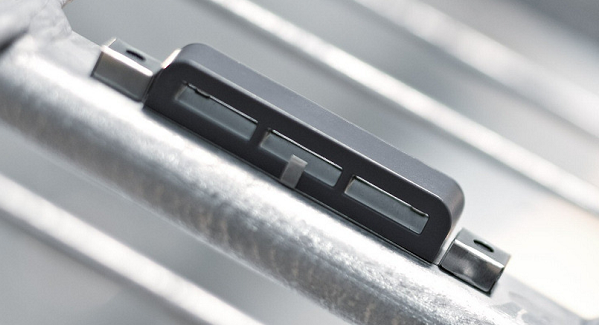
Content
What is an RFID tag?
The RFID system is radio frequency identification of objects. Based on the automatic reading or writing of data stored in transponders or RFID tags, which is the same device that is sometimes called RFID tags. Readers, readers, interrogators are used as reading devices.
There are RFID standards:
- near identification with the ability to read up to 20 cm;
- medium identification, which allow you to receive information at a distance of 0.2-5 m;
- long-range identification, operating at a distance of 5-300 m.
Labels include:
- Integrated circuit. Her task:
- store, process information;
- modulate and demodulate the RF signal.
- An antenna through which the identification of objects is ensured by receiving and transmitting a signal.
How does RFID work?
The object to be controlled is labeled. Then its primary radio frequency identification is carried out - a portable or stationary reader is used. Control points are determined at which readers with antennas are placed.
The interrogator reads data from a tag that has fallen into the electromagnetic field created by the scanner antenna. The information enters the system, where an accounting document is formed.
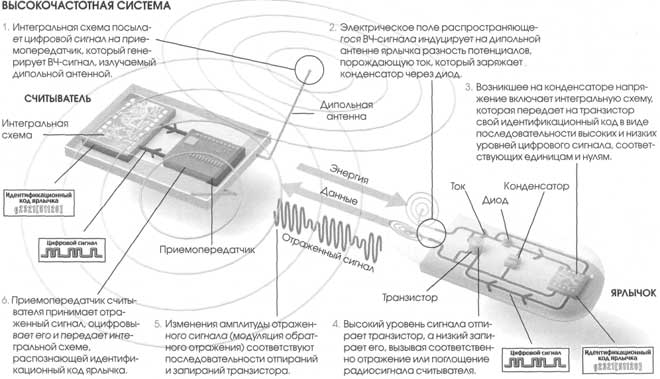
Classification of RFID tags
RFID tags differ in some characteristics by which they are classified. It:
- Source of power. Passive RFID tags do not have it, active and semi-passive tags are equipped with a battery.
- The frequency at which devices operate.
- Execution.
- Memory type of RFID tags.
By power source
According to this indicator, transponders are:
- passive;
- active;
- semi-passive.
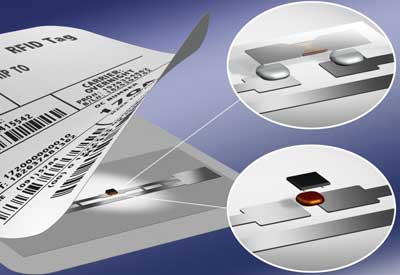
Passive devices do not have a built-in power supply. They work from electric current, which is induced in the antenna that receives the electromagnetic signal from the reader. Its power is sufficient for the operation of the CMOS chip present in the tag and the issuance of a response signal.
Passive type tags are made of silicon, polymer semiconductors. Each is supplied with an identification number, has a non-volatile EEPROM-type memory. Their dimensions depend on the size of the antennas - devices can be no larger than a postage stamp or reach the size of a postcard.
Tags operating at a low frequency provide RF identification at a distance of 30 cm. Their commercial use is placement in stickers (stickers), implantation under the skin. Devices whose radio frequency exchange is carried out in the HF range are capable of operating at a distance of 1-200 cm; in the microwave and UHF range - 1-10 m.
Active devices have their own power supply that lasts up to 10 years. They differ in range, measured in hundreds of meters. Labels have larger sizes, more memory.
The devices generate powerful output signals, which makes it possible to use them in environments that are aggressive for the radio frequency signal - water, metals. They may contain additional electronics, sensors that record the temperature of perishable goods, the state of the atmosphere, measuring illumination, vibration, and humidity.
The semi-passive appearance of tags is similar to passive devices. The difference between the technology is in equipping the battery that powers the chip. They have better performance, longer range. The latter depends on the sensitivity of the reader.
By type of memory used
According to this indicator, there are 3 types of RFID tags:
- RO. In devices with such memory, data can be written only once - this is done during the manufacturing process. It is not possible to add additional information. Tags are used for identification. They cannot be faked.
- WORM. Tags have an identifier, a block of memory into which data is written. In the future, they can be read multiple times.
- RW. Tags with identifier, memory block. The latter is used to write/read data that can be repeatedly overwritten.
By operating frequency
RFID tags operate at different frequencies:
- 125 kHz (LF band). They are passive devices. They have a small cost. Due to their small size and physical parameters, they are used as subcutaneous markers for microchipping people and animals. The disadvantage is the wavelength, which creates problems with reading and transmitting data at a long distance.
- 13.56 MHz (HF band). The systems are cheap and have no licensing problems. They are environmentally friendly, deeply standardized, and are available in a wide range of models. The tags of this group also have problems when reading information from large distances. This is especially evident in the presence of metal, high humidity. Mutual superposition of signals during reading is possible.
- 860-960 MHz (UHF band). The devices allow the use of RFID technologies at distances exceeding the capabilities of tags from the above groups. Many of the standards that ensure their operation provide for the presence of anti-collision mechanisms that protect signals from mutual overlap. The advantages of the devices include the presence of an unchangeable TID memory field, into which the code and brand of the product, as well as its identification number, are entered at the manufacturing stage. The latter provides protection of data on the tags with a password from unauthorized writing and reading.
Readers readers
These are devices that automatically read or write information stored by RFID cards. They can function stand-alone or be active as RFID works with a connection to the accounting system all the time.
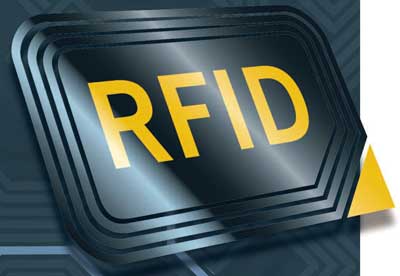
Readers are:
- stationary;
- mobile.
Stationary readers are mounted motionless on doors, walls, loaders, stackers.They are fixed near the conveyor that moves the products, they are made in the form of locks that are inserted into the table.
This group of RFID readers has a large reading area, power. They are able to process data from dozens of tags at once. Interrogators are connected to PC, PLC, integrated into DCS. They register movement, characteristics of objects, identify their position in space.
Mobile readers have a smaller range, often there is no constant connection with accounting and control systems. They accumulate the data read from the cards in the internal memory, and then they are dumped on the computer.
Application
RFID systems are used in various fields. Tags are placed on goods in the store, which allows you to control their movement, sale. Used to identify people. RFID technology is suitable for logistics and payment systems. With its help, they monitor animals on farms and pastures.
Similar articles:
